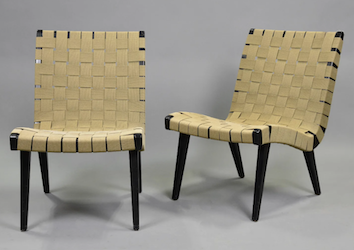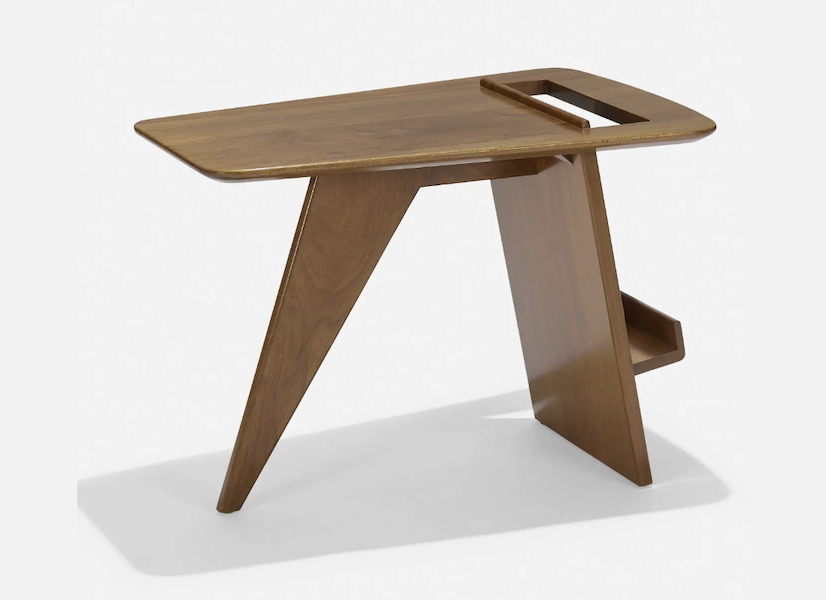
NEW YORK — Jens Risom (1916-2016) was one of the earliest and most prominent Scandinavian furniture designers to bring that timeless aesthetic to the United States. Yet, for all his talent and fame at the height of his decades-long career, he has been underappreciated when compared to his Danish compatriots, like Hans Wegner, Arne Jacobsen and Borge Morgensen.
One reason Risom’s furniture endures because it is not flamboyant or attention-seeking. He made a name for himself by designing furniture that was practical, comfortable and durable, but not alluring. Many of his designs have been reissued over the years. Among his most iconic pieces are his early-1940s webbed lounge chairs which were constructed from discarded parachute fabric deemed not fit for the army use.
Part of Risom’s legacy is built on his furniture designs that have a humanistic quality and mix easily with different interiors, said Richard Wright, CEO of Rago/Wright: “I think because it is so livable, it still has that modern yet inviting balance.” Risom’s designs from the 1940s and ’50s are arguably the most sought after today, he said, yet most can be had for modest sums.

Author Vicky Lowry wrote Jens Risom: A Seat at the Table, the first book to celebrate the designer’s legacy (Phaidon, 2022). In a phone interview, she told Auction Central News that Risom was extraordinarily talented and a visionary, in that he had his own company. He enjoyed a comeback lasting into his eighth and ninth decades of his life, yet he never received his proper due. “While he was extremely famous in the ’40s, ’50s and ’60s, he was lesser known than some of his compatriots … ,” Lowry said, noting his line to fame was not a straight path.
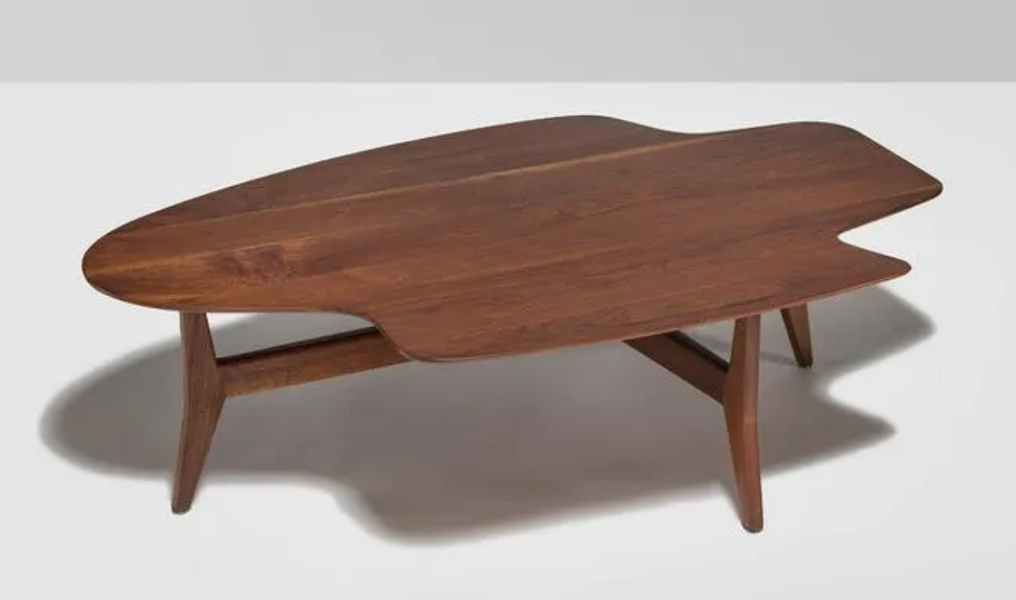
“He studied in Denmark and came here in 1938. He was a real hot shot and considered the foremost Scandinavian designer creating furniture for Americans when he was in his 20s and 30s. Unfortunately, at sort of a critical period in his young career, he was inducted into the US Army in 1943, which was a disastrous time,” she said. “Before he went into the Army, he was Hans Knoll’s first designer. They had a partnership, and when he came back, everything had changed and he was on the outs with Knoll.”
Risom then went into business for himself, launching his eponymous firm in New York City in 1946, which in its heyday was one of the three biggest furniture manufacturers in the United States. He bought an abandoned mill in Connecticut and trained the furloughed workers to make furniture. “Back in the ’50s and ’60s, he was the man. [President] Lyndon Johnson sat in a Jens Risom chair,” Lowry said. “His furniture was warm and welcoming, and I found it very intimate, inviting and incredibly comfortable, but it wasn’t the sexiest furniture in the world. I think all those reasons might explain why he just wasn’t as famous as Hans Wagner.”
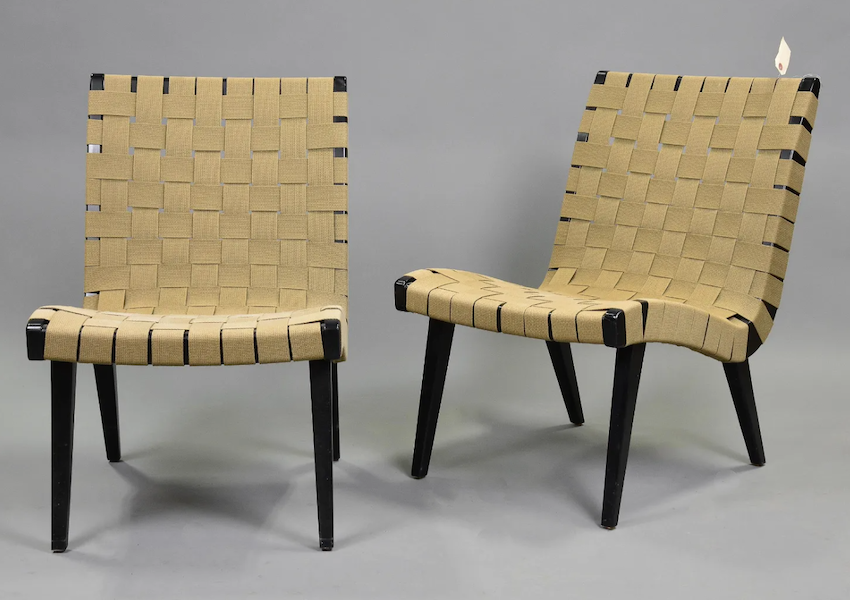
One of Risom’s most iconic pieces were his aforementioned webbed chairs that were unlike any other chairs produced at the time. World War II restrictions made certain materials scarce, so Risom cleverly sought permission to use parachute cloth that fell short of Army-grade quality. He bleached the fabric, dyed it again and wove it around a wooden chair frame. These chairs are hard to find today, and on LiveAuctioneers’ results database, original examples are few. Reissued contemporary examples are a bit more abundant and bring decent money, such as a pair of Jens Risom webbed lounge chairs for Knoll that took $750 plus the buyer’s premium in June 2021 at Gallery Auctions.
“Without a doubt, what makes that chair so interesting … is it was ingenious,” Lowry said, explaining that what was so compelling about his work, particularly his early work, was its affordability. “It was the kind of furniture young couples wanted to have. It was stylish, practical, functional, not expensive and has proved to be really enduring, as you know, from the prices that his pieces go for, for his original work.”
His webbed chair design, done for Knoll, was quickly copied by other manufacturers and is still in production by Knoll.
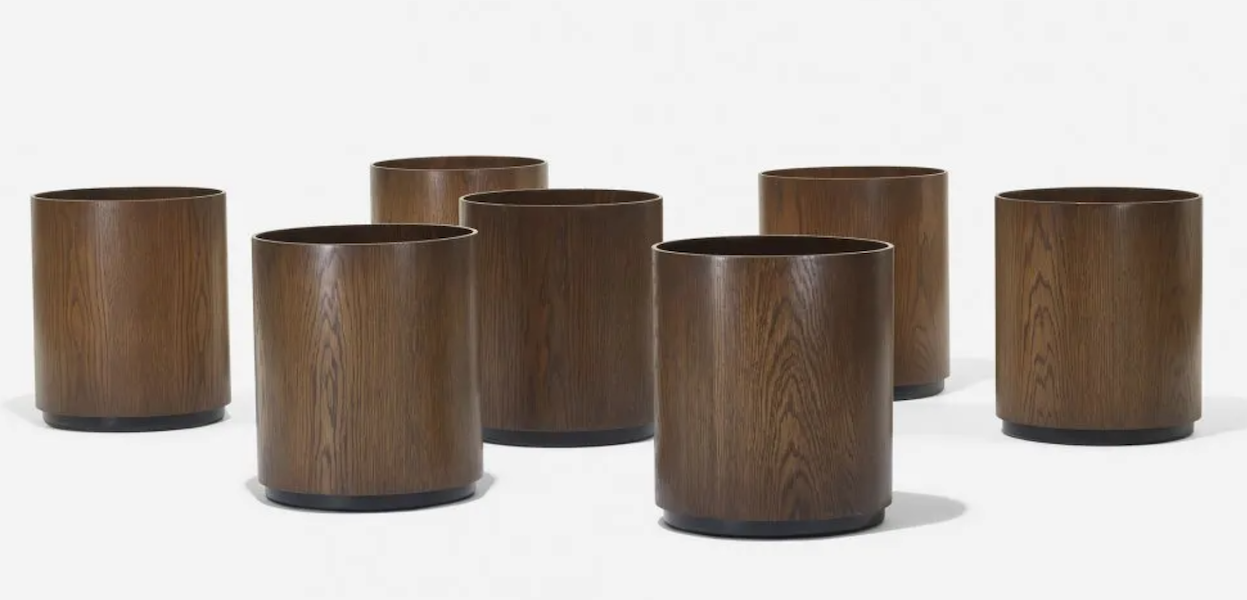
Risom’s furniture was practical, but it could be playful too. Noting a 1949 walnut magazine table Wright auctioned in September 2019 for $2,800 plus the buyer’s premium, Richard Wright described the table as having an angular leg and a little cut-out in the top. “Beyond chairs, he designed a wide range of furniture,” he said. Interestingly, out of all the Risom chairs, benches and tables Wright has auctioned, the most expensive lot was a group of seven wastepaper baskets that sold in 2013 for more than $10,000 including the buyer’s premium.
By 1970, Risom had sold his company and began doing freelance work, designing new furniture and textiles. At some point, Lowry speculates that he grew restless, and that restlessness set the stage for his comeback. He began a lucrative partnership with Design Within Reach in Connecticut to reissue affordable versions of some of his classic designs. Another watershed moment came in 2004, when he was in his 80s; the well-dressed elder statesman sought out New York City gallerist Ralph Pucci and convinced him he should be showing his furniture. Lowry said the two partnered to reimagine his classic pieces “in luxurious materials: beautiful wools and leathers and exotic woods.”
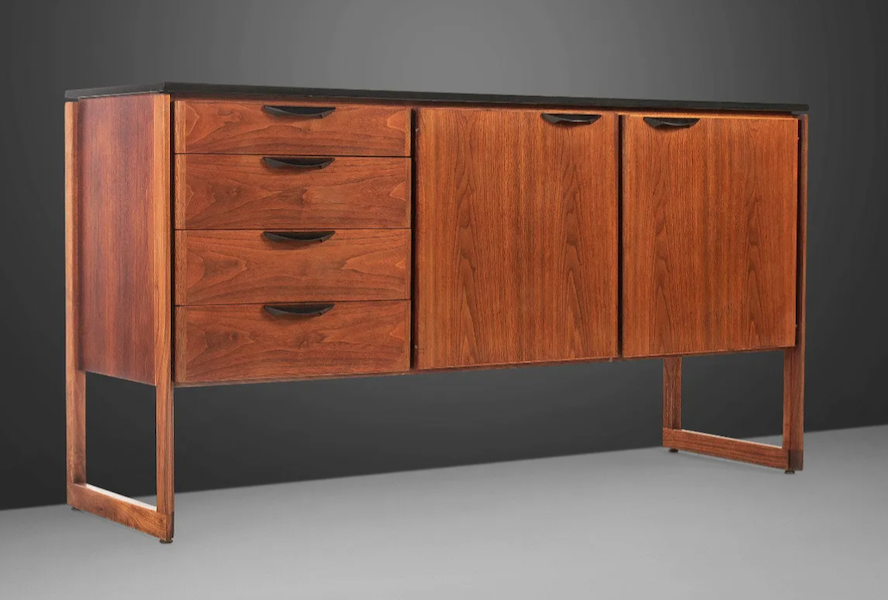
This Jens Risom circa-1960s fully restored sideboard/credenza in walnut on a sled base brought $5,500 plus the buyer’s premium in August 2022. Image courtesy of Bidhaus and LiveAuctioneers.
Perhaps best summing up Risom’s aesthetic is a quote in a Playboy cover feature in 1961 profiling the top furniture designers in America. Risom was the youngest in the group. The article’s author, John Anderson, wrote, “Unlike the imperious, scene-stealing forms of many designers, a Risom chair is a silent partner in an interior, an object for human use that is meaningless until it participates in a pattern of day-to-day living.”


